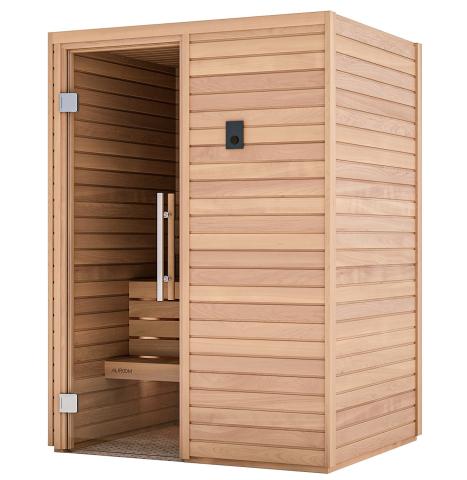What Does Traditional Sauna Do?
What Does Traditional Sauna Do?
Blog Article
The Greatest Guide To Traditional Sauna
Table of ContentsSome Known Facts About Traditional Sauna.Some Ideas on Traditional Sauna You Need To KnowMore About Traditional SaunaOur Traditional Sauna StatementsSome Known Incorrect Statements About Traditional Sauna
The majority of the weight lost in a sauna is water loss and is re-gained upon rehydrating. Without an uncertainty sauna can be an important part of a healthy weight loss program. To look at the differences between traditional and IR saunas, I will separate these right into proven, theoretical, and fabricated differences.Hence, the best factor in the saunawhich goes to the ceiling straight above the sauna heateris normally in between 185 and 190 F. Claims that a standard sauna surpasses 200 F is just not true and not appropriate for electric saunas marketed in the United States. The temperature level for a far-infrared sauna is generally established between 120 and 140 F; however, unlike the traditional sauna, the goal in and IR area is not to accomplish a high temperature level.

When a conventional sauna has actually been correctly heated, the sauna wall surfaces are cozy, the air temperature has actually accomplished established temperature and the rocks are extremely heated. As an intriguing side note, the heated wall surfaces and the rocks are discharging far-infrared warm, incorporated with the heated air, to develop an "enveloping warm".
The Best Guide To Traditional Sauna
When the heat is attained, the elements cycle on and off to preserve the heat. Many conventional sauna customers take pleasure in putting water over the rocks to create heavy steam to increase sauna moisture degrees. The benefits of pouring water over the rocks include: making the space extra comfy, moistening the nasal passages, and permitting the usage of aromatherapy by blending important oils with the water.

When the power goes into the body, it triggers the body temperature to enhance and eventually leads to perspiration. In an infrared sauna it is necessary for the emitters/heaters to remain on practically continuously. Because there is no mass of rocks to keep heat, the sauna will certainly cool down if the emitters turned off.
Not known Facts About Traditional Sauna
As discussed over, the sauna bather in an infrared space wants to place himself in front of running emitters to get optimal advantage from the heat. The home heating time for both areas can be extremely different, depending upon how the areas are utilized. For a conventional sauna, a bather should permit 30-40 minutes for Learn More the area to accomplish a wanted temperature and to correctly pre-heat the rocks.

A well constructed sauna will normally attain a temperature of 150-160 F in about 30-40 minutes. For hotter temperature levels, the area might require to warm for a longer duration.
To some, 15 mins was "wasted" while the infrared energy heated up the wood panels instead of warming a body, while others locate a pre-heated area to be more comfortable and believe an elevated starting temperature is necessary click here to find out more to begin perspiring. The length of recommended use for each room is roughly the same (10-15 minutes per session); however, due to the lower air temperatures and the ability to feel the results of infrared warmth much faster than a traditional sauna, it is not uncommon for an individual to invest a total amount of 20-30 mins in an infrared sauna.
How Traditional Sauna can Save You Time, Stress, and Money.

The average price per kWH of electricity in the united state is approximately $0.11, so a 4.5 kW heating unit will certainly cost roughly $.50 to compete one hour, if the heater runs constantly for one hour. Commonly a sauna heater will compete 75% of the initial hour and 50% of subsequent hours on because the components cycle once the set temperature level is attained.
A 2 person far-infrared space is generally physically smaller than a standard sauna, often regarding 4' x 4' or smaller sized. The IR heating unit is typically 1.5-1.7 kW utilizing a 120 volt 15 amp plug-in solution. Because the room can be used quicker than a sauna space, we will certainly think the area is made use of for to of an hour consisting of warm up time.
Lastly, there is a hardly ever discussed distinction in the social experience in between the check my blog 2 areas. While our society has actually shed several of the social benefit of the traditional sauna experience, it can be extremely socially satisfying (Traditional Sauna). From household time in the sauna, to heart-felt conversations with substantial others, to sauna partiesthe traditional sauna experience can result in intimate mingling
Some Ideas on Traditional Sauna You Need To Know
Many greater end infrared rooms consist of colored light treatment, sound systems and full-glass fronts.
Report this page